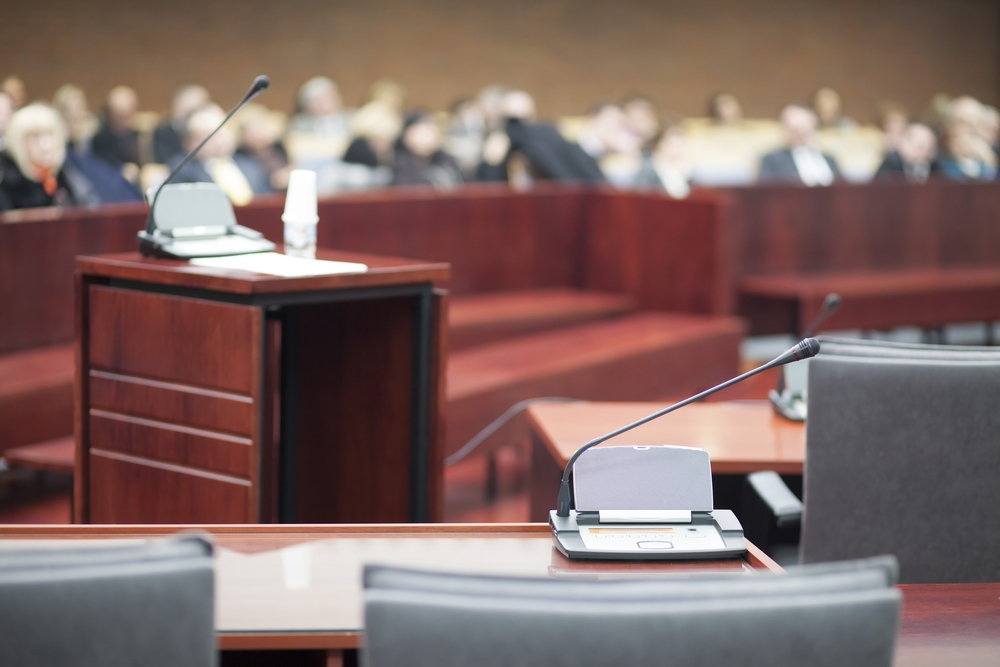The recent case of Arksey v Cambridge University Hospitals NHS Foundation Trust involved extraordinary criticism by the judge of the claimant’s neurosurgical expert. While it is an extreme example of shortcomings in an expert’s evidence, it nonetheless serves as a reminder of some of the pitfalls in giving expert evidence. Amy Heath looks at what lessons experts can take from this case.
The claim
The claimant suffered a sentinel bleed from a cerebral aneurysm on 3 November 2012. She attended the emergency department of Addenbrooke’s Hospital but was discharged. On the following day, the claimant suffered a re-bleed which led to significant disability. Subsequently, the claimant developed hydrocephalus, and in May 2014 a ventriculoperitoneal (VP) shunt was inserted. Following adjustment of the VP shunt in September 2014, the claimant made a significant improvement.
The claimant brought a claim on the basis that she should have been admitted on 3 November and, had this been the case, she would have avoided the re-bleed on 4 November and the subsequent injury. The defendant conceded that the claimant should have been admitted but contended that no treatment that could have been carried out that would have avoided the re-bleed.
The claimant also alleged that there had been a negligent delay in inserting the VP shunt. The defendant admitted a period of delay, which it contended had no long-term sequelae.
The claimant’s neurosurgical expert evidence
The claimant served two reports from their neurosurgical expert. The first supported the claimant’s case that if the claimant had been managed according to the hospital’s protocol and admitted on 3 November 2012, she would have avoided a re-bleed on the following day.
The second, supplementary, report was drafted after the claimant had received neuroradiology expert evidence. This report prompted the claimant to amend their pleadings to include an additional allegation: that there was a delay in diagnosing hydrocephalus and that the delay in diagnosis and treatment by insertion of a VP shunt had an impact on the claimant’s long-term outcome.
Both of the reports served on behalf of the claimant were dated prior to the service of proceedings. Therefore, they were drafted without the expert having reviewed the defence and amended defence or the defendant’s witness evidence.
The judgment
In his judgment, Mr Justice Martin Spencer stated it was surprising that an expert’s evidence had been disclosed that pre-dated the exchange of pleadings. He noted that an expert would usually only submit a final report once certain procedures had been followed that would have allowed them to consider all the relevant evidence, specifically the defendant’s witness evidence.
In this case, the witness evidence was vital. The defendant served statements from the treating clinicians, which the judge found included “highly important information and evidence” relating to breach of duty and information that would also have informed the experts’ views on causation.
The claimant’s expert had failed to consider an important investigation, a lumbar puncture which had taken place during the claimant’s treatment. This failure should not only have been evident from a full review of the medical records but also on reviewing the witness evidence, which referred to the lumbar puncture.
When giving evidence, the claimant’s expert explained that he had failed to note the lumbar puncture as he had not been given a full set of the medical records. In his judgment, the judge expressed the view that “this did not wash”. He noted that the claimant’s expert had met with the defendant’s expert during the course of the litigation and that he had therefore seen the defendant’s expert reports.
The defendant’s expert reports both referred to the defendant’s witness evidence and also set out the full medical history, including the lumbar puncture.
In Mr Justice Spencer’s judgment, it must have been clear to the claimant’s expert that there were medical records the defendant’s expert had access to that he had not seen. He failed to draw this to the attention of his instructing solicitor, and he acknowledged giving evidence that he only had sight of the full set of records in the week before trial when he had access to the trial bundle. The judge said that despite this he “went into the witness box and gave evidence affirming the accuracy and correctness of two medical reports which simply did not stand up to a moment’s scrutiny, given that they had been prepared on a false and wholly incomplete basis”.
The judge went onto say that the expert’s evidence “fell far below the standard to be expected of a reasonable, competent expert witness, both in relation to the preparation of his reports and in relation to his preparing to give evidence. I could see no excuse for this whatsoever.”
The judge also criticised the expert’s oral evidence as he avoided answering difficult questions from the bench or in cross-examination by straying off into different areas. The judge found that this was not due to the expert misunderstanding the questions being asked but was a “deliberate ploy” to avoid answering them. Embarrassingly, the expert became so flustered when giving evidence that he used an expletive.
Unsurprisingly, the defendant’s expert’s evidence was preferred, and the claimant succeeded only on the basis of the defendant’s admitted breach of duty and the four-month delay in inserting the VP shunt. This delay was held to have had no impact on the long-term outcome and to have only delayed the claimant’s recovery process by a period of four months.
It should be noted that the claimant’s lawyers did not escape criticism from the judge, who said: “I do not altogether exonerate the lawyers who have represented the claimant because they allowed Mr Sandeman to go into the witness box despite these clear and obvious deficiencies in Mr Sandeman’s written evidence, and this was something which should have been addressed by the lawyers long before the trial.”
Points to note
As noted above, this is an extreme case, but medicolegal experts can take important points from it:
- Check that you have everything – When preparing your report, ask yourself whether you have all the material available to form a proper opinion. If you haven’t, raise this with your instructing solicitor and request the missing documentation. It is easier if this is done before an initial draft report is completed but if time constraints do not allow it, ensure that you provide a list of the documentation you will require before a final opinion can be reached.If you are preparing liability evidence in a clinical negligence case, then you will need to have seen and commented on the defendant’s case and any relevant witness evidence.Ensuring there is an accurate list of the materials you have seen and considered in your report will also help you and your instructing solicitor to identify if there is something missing.
- Draft reports – Make it clear that your initial reports are draft reports that are not to be disclosed. Only when you are happy that the report is finalised and you have considered all the relevant material available should they be finalised for service.
- Experts’ meetings – In preparation for the experts’ meetings you will see the other side’s expert evidence. This is a good time to check whether there is anything that they have seen that you have not. If you think there is, either on reviewing the reports or during the course of your discussions, flag this for your instructing solicitor. It would be sensible to avoid completing the discussion with your opponent until the situation is remedied.
- Trial – If in the preparation for trial it comes to light that you have not seen everything or there are deficiencies in your evidence, raise this with the legal team. There will be a way that this can be dealt with during the trial to try and minimise any negative impact.
- Giving evidence – Answer the question. The judge, and opposing counsel, will see through any attempt to avoid answering a tricky question.
- Don’t rely on the lawyers – The evidence in your report is yours and should you come to give evidence at trial, you are the person who will have to explain and justify it in the witness box. Do not unquestioningly rely on your instructing legal team to ensure that your report is as it should be. Question whether you have been asked to address the right issues and whether there are other issues you need to consider. Question whether you have all the available information and whether there is something you have not been provided with or something the instructing solicitor needs to obtain.
The detriment caused by poor expert evidence in this claim was obvious. However, for an expert, failing to meet an appropriate standard in giving evidence can have wider implications beyond this.
In serious cases such a failure could result in a potential civil claim against the expert or attract the attention of the experts’ professional body. The General Medical Council provides helpful guidance in relation to the standards required and it is advisable for medical experts to be familiar with that guidance in addition to Part 35 of the Civil Procedure Rules.
You can find further information regarding our expertise, experience and team on our Clinical Negligence pages.
If you require assistance from our team, please contact us or alternatively request a call back from one of our lawyers by submitting this form.
Subscribe – In order to receive our news straight to your inbox, subscribe here. Our newsletters are sent no more than once a month.






